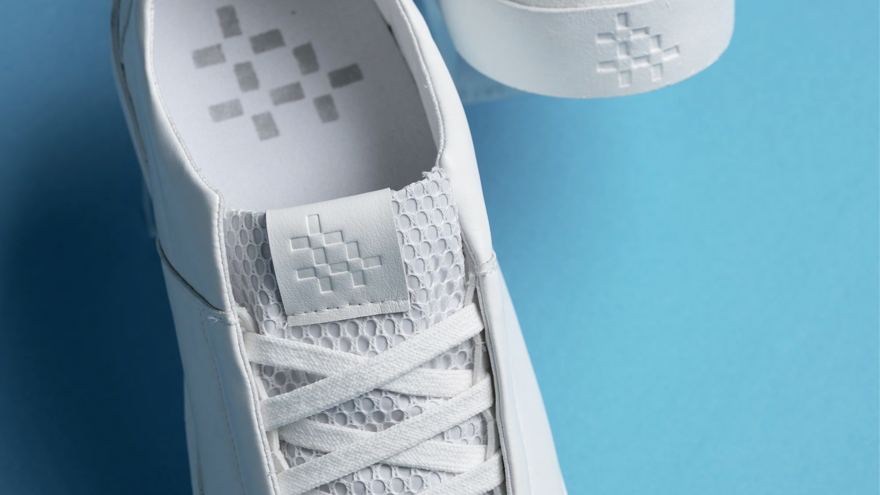The Footprintless shoe is a carbon-based innovation of 10xBeta, an international team of multidisciplinary designers and industrial thinkers based in America. They work together to rethink existing tools and design methods to enhance consumer and health products.
As a bid for the Carbon XPrize global competition (sponsored primarily by NRG, the United States’ leading energy company), the team at 10xBeta developed this shoe as an example of what can be done with the repurposed CO2 that would normally be released into the atmosphere.
According to Lynda Clemmons, Vice President of NRG Business Solutions, “The energy industry emits the largest amount of carbon. So with the NRG Carbon XPrize, we are encouraging really smart people from around the world to focus on how to take this byproduct, carbon dioxide, and turn it into something useful.”
We asked the team of engineers about their entry into the XPrize Foundation’s competition.
“The competition represents a 20 million US-dollar bounty to attract innovators, engineers and entrepreneurs into the carbon sequestration process. The XPrize Foundation was at the helm of this process and NRG is a primary sponsor for the prize,” they said.
The team considered a number of shoe designs during the early stages of the process. 10xBeta examined popular versions of modern sneakers weighed against more avant-garde designs.
“The goal was to design a white sneaker that would easily fit into today’s sneaker culture, yet be differentiable enough to be the visual manifestation of the project. The shoe was touched by many designers, including the world-renowned footwear designer D’Wayne Edwards. Earlier concepts also included high-top versions of a similar concept.”
10xBeta’s materialisation of CO2 gas has a number of potential applications in store that are not just for shoe-making.
“Once the CO2 is sequestered, it can be blended with other elements to do many, many things like making concrete and various construction materials – even fuels and fertilizers. There is a lot of research happening in the space around how to best capitalise on the CO2. We just wanted to excite people’s imaginations about the future.”
However, it is not possible to produce these kinds of carbon-based materials in a cost-effective way on a massive scale – yet.
“There is much more polymer research that will need to take place to get the shoe foam to a commercial production level. Right now, it’s expensive and the energy input for the foam is high. But that’s not to say that it can’t be done, it’s just a matter of finding that unique tipping point at the scale.”












